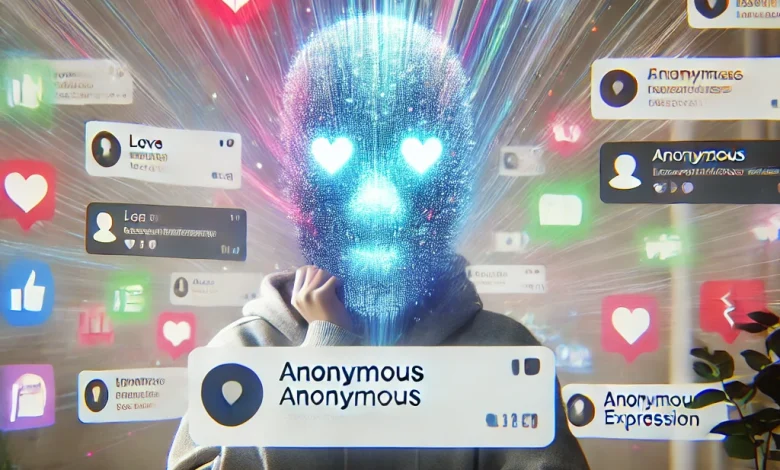10 Powerful Insights Into The Unsent Project: Exploring Love, Loss, and Emotional Expression

Table of Contents
Introduction
The Unsent Project has gained global recognition as a digital and emotional platform where people share messages they never sent. It serves as a space for individuals to express their deepest emotions without the fear of judgment. The project resonates with countless individuals worldwide, providing an outlet for unspoken words, nostalgia, and closure. By exploring human emotions in their rawest form, The Unsent Project has become a significant digital movement in contemporary emotional expression.
What Is “The Unsent Project”?
The Unsent Project was created by artist Rora Blue as a creative initiative that allows people to submit unsent messages addressed to past lovers, friends, or significant figures in their lives. Initially conceived as a way to explore unexpressed emotions, the project has since evolved into a vast digital archive of heartfelt messages.
Through The Unsent Project, individuals from all walks of life share their innermost thoughts, highlighting the universality of human emotions. Messages are collected anonymously and categorized based on their emotional essence, making it a compelling study of love, heartbreak, and longing.
The Psychology Behind the Unsent Project
The Unsent Project taps into a fundamental human need: the desire to be heard. It speaks to the universal experience of holding in thoughts that one either cannot or chooses not to express. These unsent messages often hold a great deal of emotional significance, ranging from unspoken apologies to confessions of love, regret, or loss. For many, writing a message that will never be sent offers a sense of release and catharsis. In psychological terms, this process is akin to self-therapy, providing a safe space for individuals to acknowledge and externalize their emotions.
Psychologists point to the act of writing as a form of emotional regulation. According to research on expressive writing, journaling can help individuals process complex emotions, reduce stress, and improve mental well-being. The Unsent Project allows people to engage in this practice on a larger scale, contributing to collective healing and understanding. It has become an emotional archive that preserves the shared vulnerabilities of millions.
The Emotional Depth of Unsent Messages
Many people write messages they never send for various reasons, including closure, regret, and self-reflection. The psychology behind The Unsent Project lies in the human need to articulate feelings without necessarily expecting a response. Nostalgia, unresolved emotions, and personal growth play a significant role in why people contribute to this project.
Common themes found in the messages include love, heartbreak, loss, longing, and unspoken confessions. Whether it’s an unexpressed apology or a lingering “I miss you,” these messages highlight the complexity of human relationships and emotions.
The Diversity of Submissions: Love, Heartbreak, and Beyond
The Unsent Project is more than a collection of anonymous thoughts; it’s a complex mosaic of the human experience, shaped by a myriad of emotions and life stories. The messages submitted vary significantly, and each one tells a unique tale of love, heartbreak, joy, regret, and self-discovery. While romantic love and heartbreak are common themes, the project also features messages about friendship, familial relationships, and personal growth.
The diversity in the types of messages is a testament to the broad range of human experience. Messages might contain heartfelt confessions, expressions of gratitude, or wishes for things left unsaid. In some cases, the messages are moments of reckoning, where individuals confront their own mistakes or make peace with difficult experiences. The emotional depth of these submissions reveals the complexity of relationships and the hidden dimensions of human connection, often showing sides of individuals that were previously unexplored.
How The Unsent Project Works
The submission process for The Unsent Project is simple yet powerful. Individuals anonymously share their messages through an online platform, ensuring privacy and emotional safety. Anonymity plays a crucial role in allowing participants to be honest and vulnerable without repercussions.
Messages are categorized using different color themes that represent various emotions. The project exists in both digital and physical formats, with its online presence being the most extensive. The digital nature of The Unsent Project enables widespread participation, making it an inclusive space for emotional expression.
The Role of Color in The Unsent Project
One of the most distinctive aspects of The Unsent Project is its use of colors to classify messages. Each message is assigned a color that corresponds to the sender’s emotional state. Different colors symbolize different emotions; for example, red might represent passionate love, while blue signifies sadness or longing.
Insights from submitted messages reveal interesting patterns in how colors correlate with emotions. Some colors appear more frequently in themes of love or heartbreak, highlighting the psychological and cultural significance of color in emotional expression. The use of color coding adds a visual dimension to The Unsent Project, making it an even more engaging and immersive experience.
The Impact of The Unsent Project
The Unsent Project has helped countless individuals process their emotions by giving them a space to articulate unspoken thoughts. Many participants have expressed how writing an unsent message provides emotional release and closure.
The project also fosters emotional awareness and healing by allowing individuals to relate to others who have shared similar experiences. Testimonials from participants highlight the cathartic power of this platform. Furthermore, The Unsent Project has cultivated a thriving online community where people find solace in shared emotions and collective healing.
The Power of Anonymity and Emotional Safety
One of the core elements of The Unsent Project is its commitment to anonymity. Participants are able to submit their messages without fear of identification or repercussions, ensuring that they can express their true feelings without restraint. This anonymity fosters a safe space for individuals to be vulnerable, free from the pressures of social norms or expectations. It allows participants to articulate their deepest, most intimate emotions, knowing that their words will not be judged or scrutinized.
In an age where online interactions can often feel superficial or performative, The Unsent Project offers a rare space for authenticity. By removing the need for a response or validation, it shifts the focus away from external approval and places emphasis on personal emotional expression. This freedom from judgment is essential for many individuals, particularly those who might feel unable to share their feelings in their everyday lives.
The Unsent Project and Social Media
The Unsent Project gained significant traction through social media, where its unique concept resonated with audiences worldwide. Platforms such as Instagram, TikTok, and Twitter have played a crucial role in spreading awareness and engagement.
Viral moments have propelled the project into mainstream discussions, with users sharing their favorite messages, reacting to emotional posts, and creating conversations around the themes explored. The comment sections often turn into spaces of collective empathy and support, proving the profound impact of The Unsent Project on digital communities.
The Artistic and Literary Value of The Unsent Project
Beyond its emotional significance, The Unsent Project has also been recognized for its artistic and literary value. The raw, poetic nature of the messages contributes to modern digital art and creative expression.
The project aligns with other art movements that explore human emotions through storytelling, such as PostSecret and Humans of New York. By blending art, poetry, and anonymous confessions, The Unsent Project has carved a niche in contemporary digital storytelling.
The Unsent Project’s Influence on Digital Communities
The Unsent Project’s viral success is a testament to the growing need for platforms that promote emotional transparency in the digital age. As social media continues to shape the ways in which people connect, the project has become an avenue for collective emotional expression. Many users have turned to The Unsent Project as a way to publicly share personal experiences and connect with others who may be going through similar situations.
The project has created a virtual community that is built on empathy, vulnerability, and support. It has spurred conversations on the nature of emotions and the ways in which people navigate complex feelings in the digital space. For some, The Unsent Project has become a space to seek solace and find shared understanding, while others participate to contribute their voice to a larger narrative of emotional exploration.
Criticism and Controversies
Despite its widespread appreciation, The Unsent Project has faced criticism and controversies. Concerns about privacy and anonymity have been raised, as people question the ethical implications of publicly displaying deeply personal messages.
Additionally, some argue that the emotional nature of the messages could be triggering for individuals dealing with grief, heartbreak, or mental health struggles. Discussions around the authenticity of the submissions also exist, as there is no verification process to confirm the messages’ legitimacy. These ethical considerations continue to spark debate about the responsibilities of such emotionally charged digital platforms.
The Future of The Unsent Project
The Unsent Project continues to evolve, with potential expansions into books, exhibitions, and interactive platforms. As technology advances, AI and data visualization may further enhance how the project categorizes and presents messages, making it even more accessible and immersive.
The Unsent Project represents a significant development in digital storytelling and emotional expression. As more people seek spaces to share their emotions authentically, this project will likely continue to shape conversations around love, loss, and human connection in the digital age.
In its continued growth and impact, The Unsent Project offers an invaluable contribution to contemporary art, emotional health, and social discourse. Its success underscores the power of collective vulnerability and the deep human need for connection, proving that even in a digital age, authenticity and emotion can transcend the screen and foster a deeper understanding of the human condition.
Conclusion
The Unsent Project has undeniably become a groundbreaking movement in emotional expression, offering people worldwide a unique space to share their most intimate thoughts. Whether it’s a message of love, loss, or longing, this digital platform provides a valuable outlet for catharsis and self-expression. The project’s ability to tap into universal human emotions and connect individuals through shared experiences demonstrates its profound impact. By fostering emotional transparency, The Unsent Project not only encourages personal healing but also contributes to a larger digital community focused on empathy and understanding.
As The Unsent Project continues to evolve and expand, it is clear that its influence on digital storytelling and emotional health will persist. Its ability to offer a space for authenticity, free from judgment, proves that even in the digital age, there is a profound need for connection and emotional expression. The future of The Unsent Project remains bright, with potential for even greater engagement and deeper exploration of human emotions.
FAQs
What is the Unsent Project?
A digital platform where people anonymously share unsent messages to loved ones, friends, or significant figures, exploring emotions like love and heartbreak.
Who created the Unsent Project?
It was created by artist Rora Blue as a creative initiative to provide a space for expressing unspoken thoughts and emotions.
How does it work?
Individuals submit unsent messages anonymously through an online platform, which categorizes them by emotions using colors.
Why participate?
People take part for emotional release, closure, and self-therapy by expressing feelings without expecting a response.
What themes are common?
Common themes include love, heartbreak, longing, loss, regret, and unspoken confessions, reflecting the complexity of human emotions.
Is it anonymous?
Yes, complete anonymity ensures participants can freely express emotions without judgment or identification.
Can it be triggering?
Yes, some messages might be intense and triggering for those dealing with grief or mental health struggles. Sensitivity is encouraged.
What role does color play?
Colors categorize messages by emotion, adding a visual layer to the emotional expressions, like red for love and blue for sadness.
What are the future plans?
Plans include expanding into books, exhibitions, and interactive platforms, possibly using AI for enhanced categorization.
Why is it popular?
Its universal appeal lies in providing a space for people to express emotions that resonate with a global audience.
Can anyone submit a message?
Yes, anyone can submit, as long as they follow the guidelines of emotional honesty and respect.
Is there a message length limit?
There’s no strict limit, but brevity and clarity are encouraged to maintain emotional impact.
Are the messages curated or edited?
No, messages are displayed in their original form to preserve their authenticity.
Can I remove my message?
If you wish to remove your message, you can contact the support team, but review the terms and conditions before submitting.
Is it available in multiple languages?
Yes, it accepts submissions in various languages, allowing people from diverse cultures to participate.
Does it focus only on romance?
No, it includes themes of grief, friendship, family relationships, and personal growth, beyond just love and heartbreak.
How does it impact mental health?
It provides a cathartic outlet for expressing emotions, promoting emotional well-being and potentially easing distress.
Can I follow on social media?
Yes, follow on Instagram, TikTok, and Twitter for updates, new messages, and community stories.
Are there events or exhibitions?
Yes, exhibitions and events showcase messages and allow people to connect in person to explore the project’s themes.
Can I contribute in other ways?
You can raise awareness on social media, or create art or poetry inspired by the messages shared.
How do I submit a message?
You can submit your message anonymously through the platform’s online submission form, ensuring privacy and emotional safety.
Are there any guidelines for submitting?
Yes, participants are encouraged to express their thoughts authentically while maintaining respect for others’ emotional experiences.
Can I submit more than one message?
Yes, you can submit multiple messages as long as each one follows the platform’s guidelines for emotional honesty and respect.
Can my message be shared on social media?
Messages shared on social media are chosen by the platform, with certain messages being featured to highlight common themes and emotions.
How often are new messages submitted?
Messages are submitted continuously, allowing the platform to maintain a dynamic flow of emotional expression from a global community.
Is there a way to interact with other submissions?
While you can view other messages, the focus is on personal expression, so direct interaction with other submissions is not part of the platform’s structure.
What is the purpose of emotional color coding?
The colors represent various emotional tones, helping visually categorize the messages and providing a deeper understanding of emotional expression.
Is there a community for people to connect?
Yes, the platform has built a supportive online community where individuals can share their experiences and empathize with others.
Can I contribute anonymously without sharing my message?
Yes, you can participate in discussions and spread awareness without sharing a personal message if you prefer not to do so.
How do I access past submissions?
You can explore archived messages on the platform’s website or through special exhibitions and events, which showcase selected entries.
You May Also Read
Golden State Warriors vs Dallas Mavericks Match Player Stats



